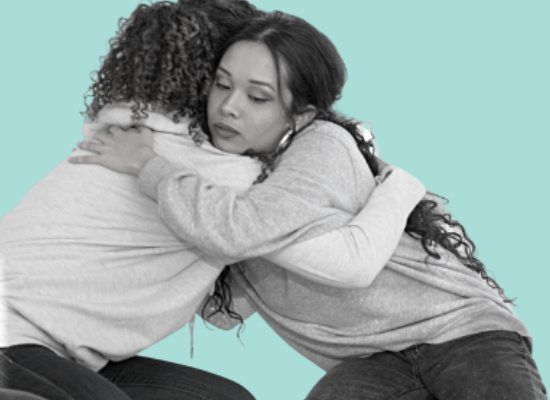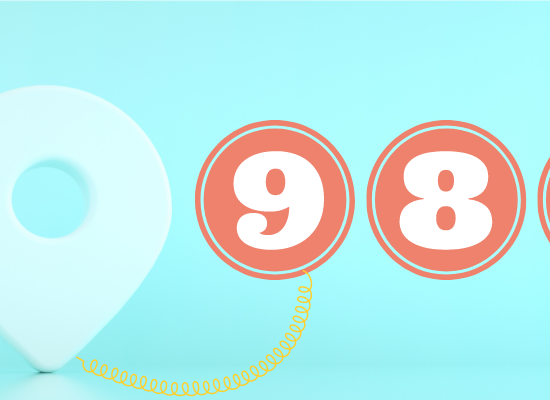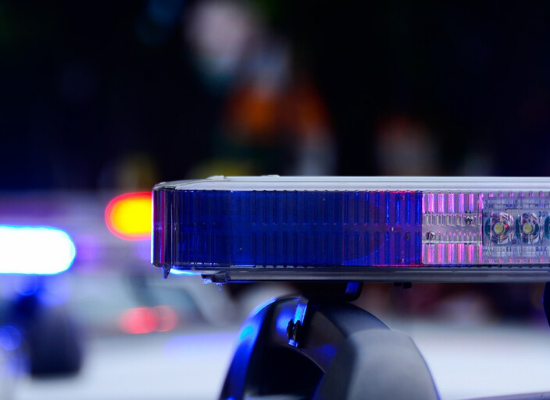
Stephanie Hepburn is a writer in New Orleans. She is the editor in chief of #CrisisTalk. You can reach her at .
Chief Murphy J. Paul grew up in New Orleans’ Lower Ninth Ward. He’s been in law enforcement for nearly 30 years, starting his career as an Orleans Levee District Police officer before joining the Louisiana State Police, where he retired as a Deputy Superintendent in 2018. Today, he’s Chief of the Baton Rouge Police Department and on the board of the Bridge Center for Hope, a behavioral health crisis stabilization center that opened in February 2021.
Over the years, Chief Paul has seen an uptick in behavioral health emergencies in Baton Rouge. The city’s 911 call data reveals a substantial jump since 2017. In large part, that’s because of improved data tracking for mental health 911 calls and spikes in overdoses, particularly during the Covid pandemic. Louisiana has experienced a 56% increase in drug overdose deaths since March 2020, and Baton Rouge has seen a 48% rise in overdose-related 911 calls since 2019. “The deaths, interruption of normalcy, and economic hardship presented in communities all across the country from the pandemic creates trauma,” he says, “and some people are turning to substances to cope.”
Chief Paul highlights that the pandemic has worsened the challenges marginalized populations already faced. Like other communities throughout the nation, the East Baton Rouge Parish School System experienced school closures. “What’s the impact of that on kids?” asks Chief Paul. “What’s the impact on the single mother who relied on her children going to school so they could get the meals they might not get otherwise or so she could work?” He says he saw parents trying to navigate working with making sure their kids went online for school at the right time or unable to find someone who could be with their children while they went to work. “People have experienced so much stress and trauma.”
Nationwide, there have been stark racial disparities in both Covid cases and deaths. That’s no less true in Louisiana. According to the Johns Hopkins Coronavirus Research Center, since the onset of the pandemic, Black people have made up 33% of the state’s Covid cases and 35% of deaths from the virus. Psychiatrist Rochelle Head-Dunham, M.D., executive and medical director for the Metropolitan Human Services District in New Orleans, told us in October 2020 that the pandemic has made racial disparities impossible to deny. “It’s policy that’s both the problem and solution,” she said. “Vulnerabilities to the virus aren’t inherent to a person’s race but because of the disadvantages U.S. systems have created.”
Racial and ethnic disparities aren’t just in healthcare; they’re pervasive and consistent across all systems in the United States. In fact, during the pandemic, Black and Hispanic families have experienced increased hardships like food insufficiency, higher unemployment, and increased challenges in paying for housing and household expenses. These hardships fell after the enactment of the American Rescue Plan but have still persisted. “All of these issues were exacerbated as families have tried to navigate the ever-changing ‘new normal’ that was presented to us,” says Chief Paul.
As behavioral health crises have been on the rise in Baton Rouge, so too has the increased pressure on its existing emergency systems. Like elsewhere in the nation, the default behavioral health responder and provider have been law enforcement and the emergency room, respectively. “We could either take the person to jail or the hospital,” says Chief Paul. He and his colleagues had long been concerned with the dearth of choices and they’d also begun to identify repeat calls for services. “That’s when we realized our community was experiencing increased mental health and substance use crises, he says, “and we didn’t believe people were getting the care they needed.”
In the United States, people with a serious mental illness have an increased likelihood of incarceration. They’re also at increased risk of harm. According to a 2018 report by the Promise of Justice Initiative, inmates at the East Baton Rouge Parish Prison were dying at a rate more than twice the national average. Among the deaths is that of David O’Quin, who was experiencing a psychiatric crisis and was arrested for disturbing the peace. He died of cardiac arrest after languishing in restraints off and on for over 186 hours at the East Baton Rouge Parish Prison, sometimes 24-hours at a time. “Mental health crisis isn’t a crime,” says Chief Paul, “and the traditional response of taking people to jail harms people individually and society as a whole.” “The correct response to a crisis is the one where people get the help they need.”
That’s why he and other community leaders like Tonja Myles and Bill O’Quin, whose son David was having a psychiatric crisis and died while restrained in jail, pushed to bring a crisis stabilization facility to East Baton Rouge Parish (a parish is what other parts of the country call a county). “It was a collective approach with the mayor’s office, the district attorney’s office, the police department, the sheriff’s office, the business community, and mental health providers,” he says. The partners began to work with local policymakers on a mental health tax and with community partners to develop a strategy on how to inform the public on the crisis and the need for a crisis stabilization center. “We were very strategic in our approach to get the mental health bill tax passed,” he says. “We just thought if we could present an argument to the people that the community needed alternatives to prison and the emergency department, they’d agree with us. That’s exactly what happened.” In 2018, East Baton Rouge residents voted for the Bridge Center for Hope property tax of $1.5 million for 10 years.
Chief Paul points out that while law enforcement is a critical partner—all of his officers are CIT-trained in crisis stabilization, they aren’t behavioral health experts and need to have an alternative to jail and the hospital where they can drop people off quickly. “Taking people to jail or the hospital, we averaged wait times of anywhere between 4 and 12 hours,” he says. The Bridge Center opened in February 2021, and, since launching, drop-offs have taken less than four minutes. “At first, I thought drop-offs would take 10 minutes, and then we estimated 5 to 7 minutes,” says Chief Paul, “so less than 4 minutes has far surpassed my expectations.”
Drop-off numbers for the first three quarters of 2021 are available to the public on the Bridge Center’s website. Charlotte Claiborne, the center’s executive director, shared with #CrisisTalk that from February 2021—when the center launched—to the end of the year, first responders made 888 drop-offs, including those by the Baton Rouge Police Department, East Baton Rouge Sheriff’s Office, and EMS.
Last year, 41% of the Bridge Center’s guests were from first responder drop-offs, while the remaining 59% were from direct entry (walk-ins). That includes people who reach out to trauma expert Tonja Miles’ “Ride or Die” program (225-788-7788), where an Uber or Lyft takes people to detox or treatment facilities, including the Bridge Center. In 2021, guests at the center received treatment for substance use (51%) and mental health (49%) challenges, and the readmission rate was 14%.
Chief Paul points out that first responder drop-offs are just one piece of diversion and the city’s crisis continuum puzzle, which is why 911 call takers and dispatchers receive crisis stabilization training and the Louisiana Department of Health’s Office of Behavioral Health is launching mobile crisis services in April, which contracted Managed Care Organizations will dispatch in the area—including Healthy Blue, Louisiana Healthcare, Connect Aetna, AmeriHealth Caritas, and Humana. Teams will comprise a peer support specialist and licensed mental health professional. Chief Paul says that the community has pushed for a mobile crisis team response instead of a co-responder model—teams usually made up of a police officer or emergency medical technician partnered with a behavioral health professional. “Mobile crisis teams can contact law enforcement if needed,” he says, “but they’re trained to de-escalate behavioral health crisis situations.”
The Office of Behavioral Health is also developing and implementing a coordinated crisis response system in anticipation of 988, the nationwide three-digit number for mental health, substance use, and suicidal crisis that telecom companies must direct to the Lifeline by July 16. That includes developing standardization for Louisiana’s seventy-eight 911 public safety answering points. In Baton Rouge, Chief Paul says coordination between first responders, which are housed on the 911 call center floor, is far easier. “We are all under the same roof with cubicles,” he says, “there’s no brick and mortar to separate us.” Call takers and dispatchers for EMS, the police department, the sheriff’s office, and the fire department also use the same computer-aided dispatch system, commonly called CAD. The partnership between first responders and the Bridge Center, notes Chief Paul, has been a critical step for behavioral health diversion, intervention, and prevention. However, there’s much still to be done. “We need to ensure that 911 and 988 communicate and are coordinated,” he says.









